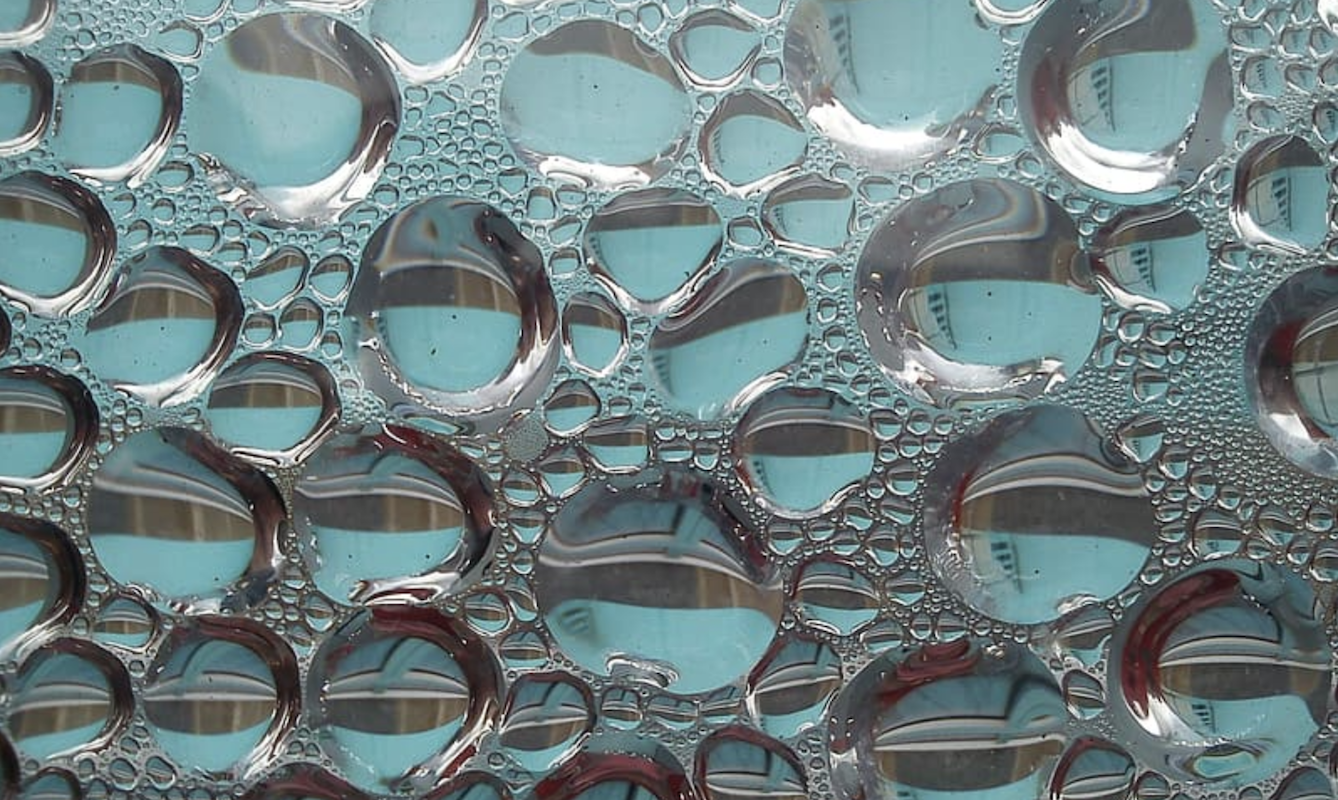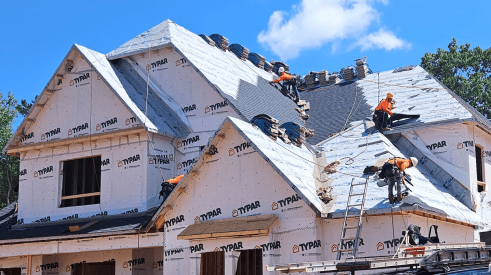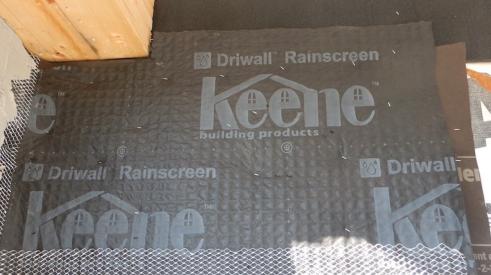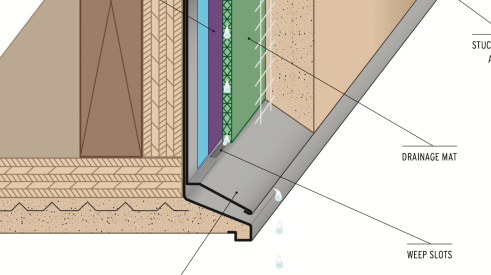Revised
Building science is a systems approach to home building that considers relationships between a home's components and its environment. The goal of building science is to:
- Optimize occupant health, comfort and safety
- Maximize energy efficiency and structural durability
- Reduce builder and contractor callbacks.
Part three of the Building Science series will examine moisture and moisture flow — where moisture comes from, sources of moisture, as well as problems and solutions associated with moisture and moisture flow.
What is moisture flow?
Because of its association with health concerns, moisture flow — as it relates to mold and mildew growth — has been a popular topic among homeowners. Problems linked to moisture flow, or an excess of moisture flow, include:
- Condensation on windows and in the building envelope
- Poor indoor air quality
- Decreased efficiency of insulation
- Accelerated deterioration of building materials
- Potential structural damage
Where does moisture flow come from?
Moisture flow comes from a variety of sources, including exterior moisture and/or internal problems. With exterior moisture, rain can soak into the ground and seep into the house through the foundation. Rainwater can also come up through the slab, hence why vapor barriers are used under slabs.
An often-overlooked source of moisture within the house comes from people and activities in the house. People bathe, clean, cook, perspire — all sources of moisture. Plants and pets also serve as sources of moisture as well.
Additional examples of moisture inside the home include clothes dryers, which can contribute five or six pints of moisture to the house per load. In addition, missing vapor barriers, which prevent ground moisture from migrating into the conditioned space, can add 105 pints of moisture a day into the house. Needless to say, moisture is unavoidable.
-
Additional resource: The EPA's Moisture Control Guidance for Building Design, Construction and Maintenance
Excess Moisture-Flow Problems and Solutions
Moisture is unavoidable; however, it is controllable. The following will provide a top-to-bottom review of moisture flow problems and solutions.
Moisture Flow in Roof, Attic, and Ceiling Systems
Problems
Problems associated with roof/attic/ceiling systems include:
- Condensation.
- Surface staining.
- Material Deterioration.
From the outside, condensation and surface staining can be seen by snow melting in a specific spot on the roof.
With material deterioration, the plywood, underlayments and shingles can all deteriorate if they become wet. Surface condensation may be the cause of material deterioration. Additional causes of material deterioration may include ice damming or high humidity.
Solutions
How can a builder solve roof/attic/ceiling system problems? The following tips offer some helpful solutions:
- Air seal all penetrations.
- Install vapor retarders in closed cavity applications such as walls and cathedral ceilings. If the attic is properly ventilated, it's probably not necessary to install a vapor retarder on the attic floor. Consider the local climate and check the codes.
- Design the home for proper ventilation to control moisture loads easily.
- Ensure roofing, ventilation and insulation are working together to prevent moisture problems.
- Use a ventilation strategy to make sure airborne moisture is carried away. Air space between the roof deck and the insulation is essential.
- Properly layered roofing materials are the first line of defense against roof leaks. Be sure to install the system in accordance to the manufacturer's requirements.
Wall Systems and Moisture Flow
When examining wall systems, it is important to consider that wall construction should be treated differently in different climates.
Problem
- Because the United States varies in terms of climate, it is important to remember, when designing a wall system, that there is not a "one size fits all" approach. It is crucial to develop a wall system that is compatible with the local climate.
Solutions
There are several solutions for combating problems relating to wall systems, including:
- Air barriers — important in eliminating moisture problems.
- For the exterior, install an appropriate weather barrier to make sure water does not get inside of the house.
- Minimize potential surface condensation by using cavity insulation, exterior insulating sheathings and better-performing windows.
- Exterior wall systems should have a drainage plan to allow water to run off the building and drain to the outside.
Different types of exterior siding systems will affect how a wall system performs. - Non-reservoir systems, which include vinyl or aluminum siding, do not have the ability to store moisture.
- Storage reservoir systems, which include brick or masonry, can potentially store large amounts of moisture.
Reservoir systems must have the ability to dry so they won't cause moisture problems. It's up to the architect or designer to plan for this.
Permeance of Building Materials
Permeance, commonly referred to as "perms," is a measurement that refers to the ability of products to resist water vapor passing through them. The higher the number, the greater the perm. For example, gypsum board, mineral wood and fiberglass are very permeable and have high perm values. On the other hand, some products that can be used as vapor retarders — such as asphalt-coated kraft paper or vapor retarding latex paint — have low perm values.
Builders should know there exists "smart" vapor retarders, which have the ability to vary perms depending on moisture conditions. How exactly does it work? In cold, dry weather, smart vapor retarders work like a poly film to repel moisture. If moisture builds up inside a wall cavity, for example, the smart vapor retarder senses the moisture and increases its permanence, permitting the moisture to leave the cavity and allowing it to dry out.
Windows and Moisture Flow
Much like roofs/attics/ceilings, common moisture flow problems related to windows include condensation and staining. Other problems include:
Problems
- Moisture damage due to poor installation. If installed poorly, algae can grow near the areas where the window was installed.
Solutions
Solutions for combating problems related to moisture flow and windows include:
- For surface condensation, lower the U-factor
- Make sure windows are installed properly.
- Be sure to install flashing and seal the windows as recommended by the window manufacturer.
Moisture Flow in Basements and Crawlspaces
Probably the area most often associated with moisture flow problems, poorly planned basements and crawlspaces can wreak havoc on a house.
Problems
Problems associated with moisture flow in basements and crawlspaces include:
- Water damage.
- Odor.
Solutions
Solutions for combating problems relating to excess moisture in basements and crawlspaces include:
- Good site drainage is critical.
- Use dry slab construction — using foundation drains and a sand and gravel foundation.
- Be sure to remove existing moisture sources.
- Avoid installing vapor retarders in below-grade basement walls. Smart vapor retarders, however, work well.
- Seal penetrations.
- Seal duct and plumbing chases.
- Cover crawlspace ground with a vapor barrier so that ground moisture will not be able to get into the space.
- Install a vapor barrier under the slab.
If you're building in a cold climate in the U.S., here's more info about essential details for warm, dry basements in your climate type, and some general considerations and tips for dealing with moisture and concrete.
Fixing Moisture Problems
If there are moisture problems that occur after the house is built, there are some additional fixes, including:
- Install exhaust fans.
- Install dehumidifiers.
- Increase fresh air ventilation (depending on climate).
- Size air conditioning systems for climate.
- Ensure the air distribution system maintains a neutral or slightly positive house pressure.
- Seal all ducting with the appropriate materials as required by local code.
Advertisement
Related Stories
Quality Matters
Don't Underestimate the Importance of Roofing Underlayment
Regardless of which product you choose to use, installing a roofing underlayment will help ensure the roof system withstands the elements and the home stays dry
Quality Matters
Getting Rainscreens Right to Help Ensure Walls Stay Dry
To rainscreen or not to rainscreen, that is the question … but it shouldn’t be
Quality Matters
Construction Details for Trouble-Free Stucco Overhangs
Transitions where horizontal and vertical stucco surfaces intersect are prone to moisture problems. Attention to proper detailing will help you avoid issues with water intrusion







